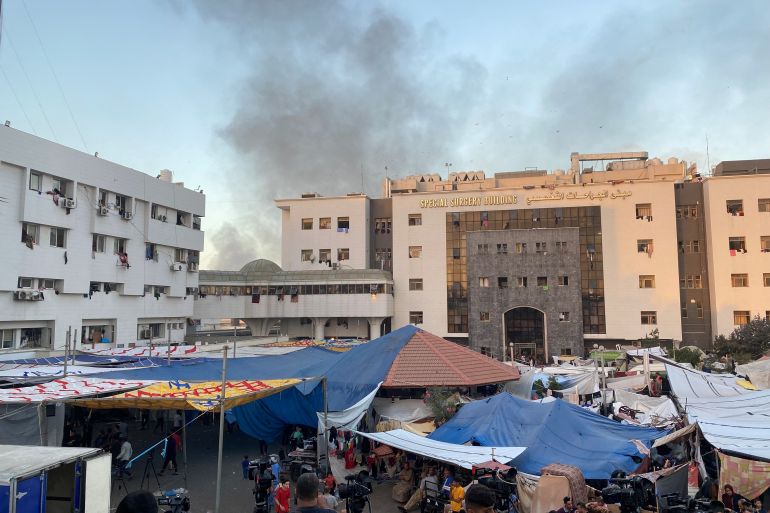The recent announcement of a temporary ceasefire between Israel and Hamas has raised questions about the ongoing conflict in Gaza and the dynamics between the United States, Israel, and the Palestinian movement. The agreement, brokered by Qatar and Egypt, suggests that Israel and the US are far from “wiping out” Hamas, contrary to their previous claims.
The ceasefire comes after international outrage was sparked when Israeli tanks and soldiers stormed into the al-Shifa Hospital compound in Gaza City, claiming it to be a Hamas command center. However, it was revealed that the compound was actually a hospital, leading to speculation about a potential US-Israeli agreement. Under this alleged agreement, the US would support Israel’s seizure of al-Shifa and provide political and diplomatic cover, while also working towards a deal with Hamas.
The significance of this agreement lies in the fact that the US and Israel, who have vowed to eradicate Hamas, are now negotiating and reaching agreements with the Palestinian movement. While Qatari-Egyptian mediation played a role, the negotiations were ultimately conducted with Yahya Sinwar, the head of Hamas in Gaza. This shift in dynamics suggests that Hamas is not as desperate for a respite from the Israeli onslaught as previously believed.
The details of the agreement indicate that Israel has made significant concessions to Hamas. These include releasing three times as many imprisoned women and children as the Palestinians, excluding Israeli soldiers from the exchange, increasing humanitarian supplies to Gaza, implementing the exchange during a continuous four-day truce, and prohibiting Israeli jets and drones from using Gaza’s airspace for several hours each day. These terms closely resemble the deal initially offered by Hamas, indicating that the majority of their demands have been met.
Furthermore, Hamas has succeeded in forcing the US and Israel to consent to the supply of large amounts of essential humanitarian aid to Gaza. This highlights the discrepancy between the perception of Hamas as a terrorist organization and Israel as a morally superior force. While Hamas achieves significant progress on the humanitarian front, Israel continues its mass killings and transforms Gaza into a wasteland.
The future of the conflict remains uncertain. The release of only Israeli and dual nationals suggests that further negotiations for foreign citizens’ release may occur, potentially extending the truce. However, it is unlikely that the Israeli leadership can accept an indefinite truce, as it is politically and personally beneficial for them to keep the conflict going. The possibility of further escalation, both within Gaza and along the Israeli-Lebanese front, cannot be ruled out.
The stance of the US leadership is also unclear. President Joe Biden appears indifferent to the crisis’s impact on US interests, while Secretary of State Antony Blinken seems uninformed. CIA Director William Burns and Defense Secretary Lloyd Austin appear concerned. The outcome of internal conflicts among Israeli leaders and the US government’s stance will determine the future course of action.
In conclusion, the ceasefire agreement in Gaza challenges previous assumptions about the conflict and highlights the need for negotiated agreements with Hamas. The eradication of Hamas is no longer a feasible outcome, and the various “day after” scenarios proposed by the Washington echo chamber must be reconsidered. The views expressed in this article are the author’s own and do not necessarily reflect the editorial stance of any publication.




